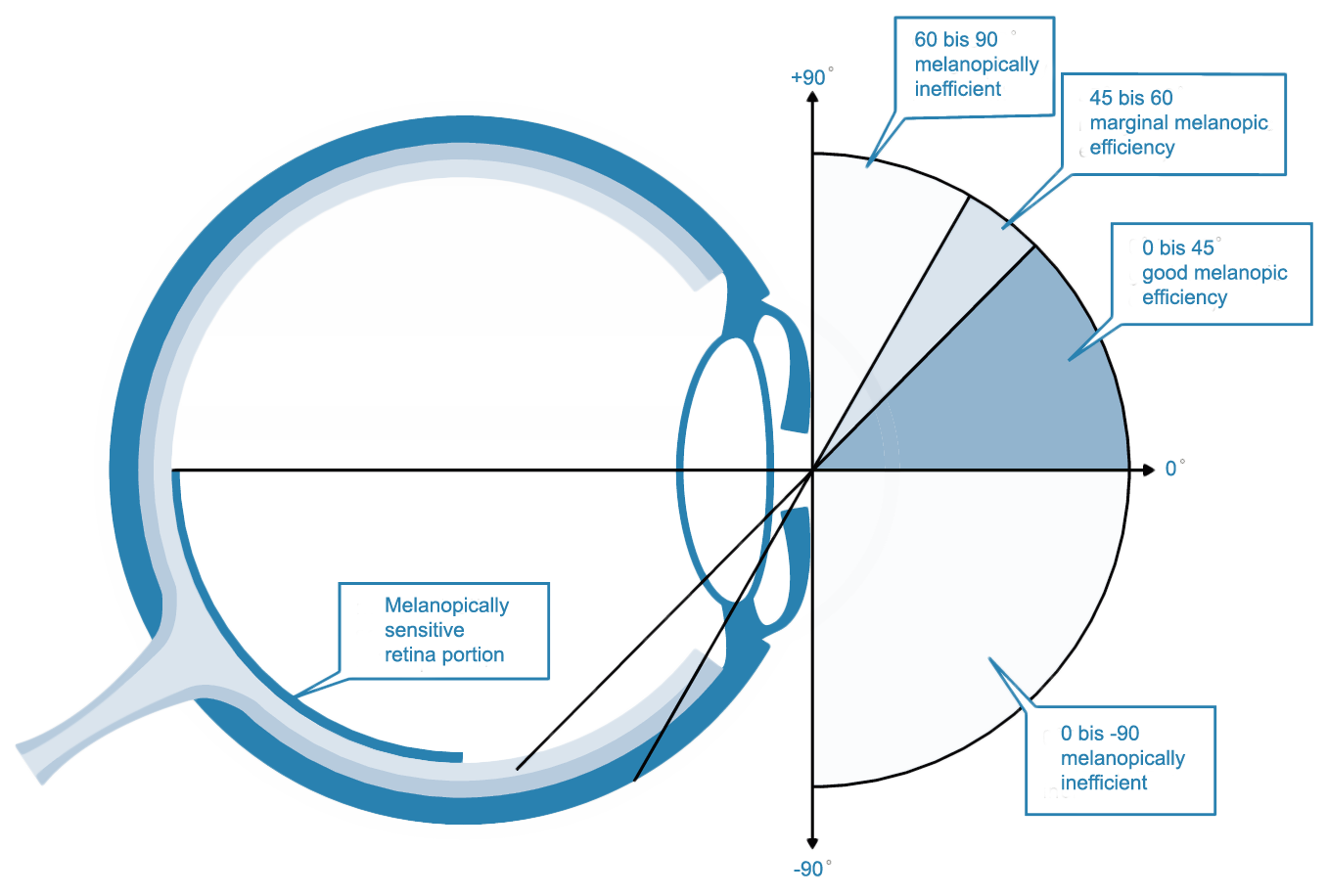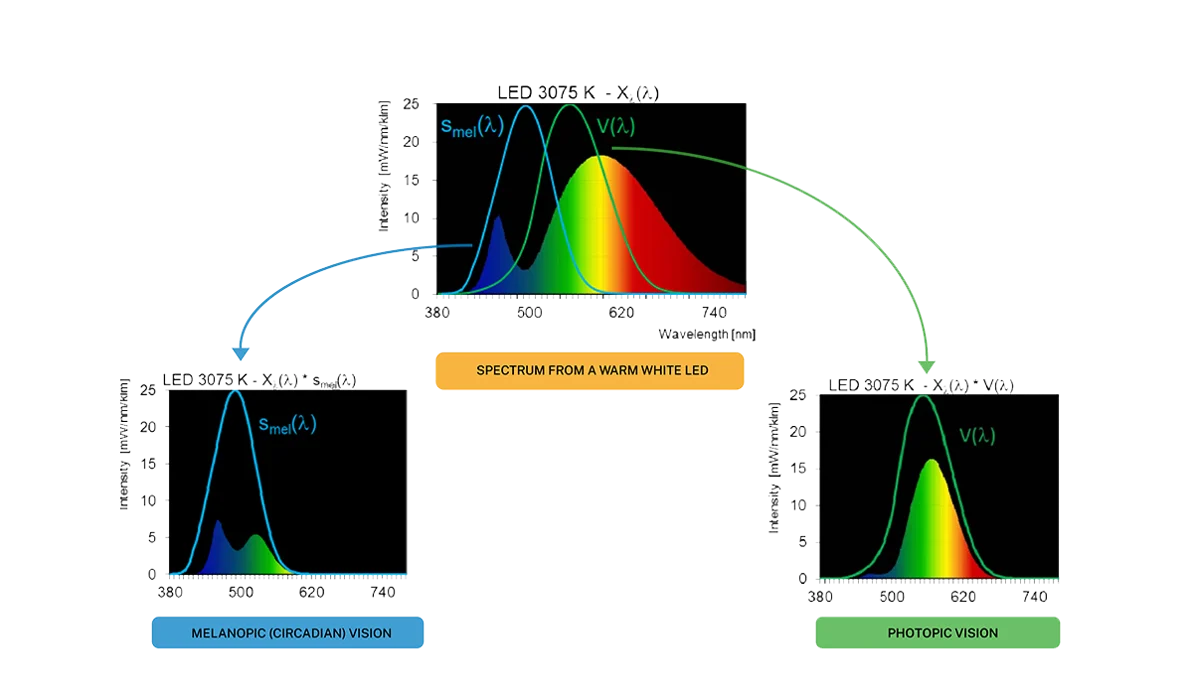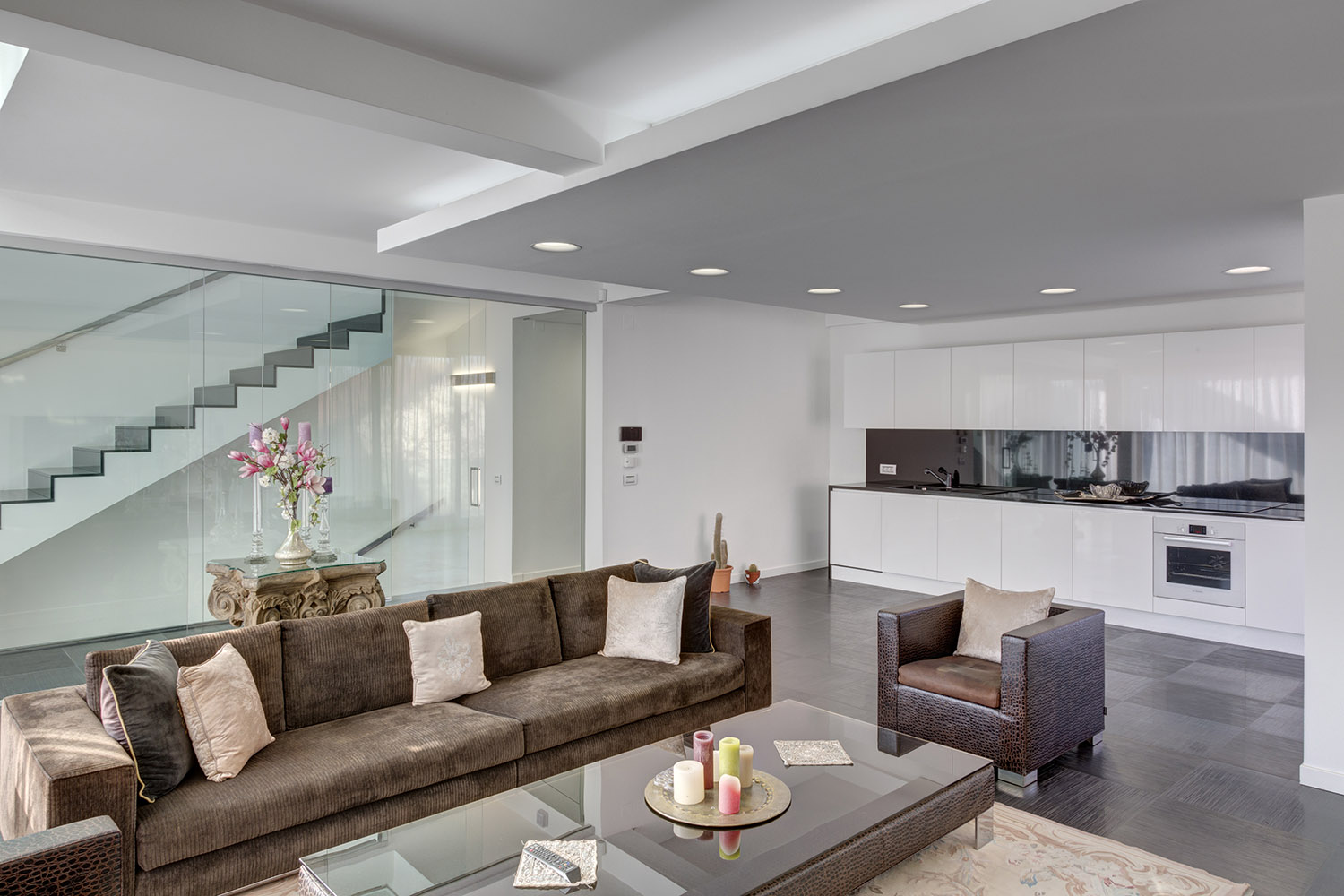In the quest for better health and well-being, we often look to diet, exercise, and stress management. However, one crucial factor that significantly influences our health is often overlooked: light. Specifically, the type of light known as melanopic light plays a pivotal role in regulating our biological functions. Let’s dive deeper into what melanopic light is, how it is measured, and its profound effects on our health.

What is Melanopic Light?
Melanopic light refers to the light that stimulates melanopsin, a photopigment found in certain retinal ganglion cells in the eye. Unlike the rods and cones responsible for vision, these cells are primarily involved in non-visual responses to light. Melanopsin is most sensitive to light in the blue part of the spectrum, around 480 nanometers. This type of light is crucial for regulating our circadian rhythms, which are the natural, internal processes that follow a roughly 24-hour cycle and respond to light and dark in our environment.

Measuring Melanopic Light: Melanopic EDI and Melanopic DER
To better understand how different light sources affect our biological systems, researchers have developed specific metrics:
Melanopic Equivalent Daylight Illuminance (EDI):
Melanopic EDI measures the effective light intensity adjusted for the sensitivity of melanopsin. This measure, expressed in lux (lx), quantifies how much a given light source contributes to the melanopic response. By using melanopic EDI, we can assess how different lighting conditions influence our circadian rhythms and related biological processes.
Melanopic Daylight Equivalent Ratio (DER):
Melanopic DER is the ratio of melanopic EDI to the photopic illuminance, which is the light level perceived by the human eye for vision. This ratio indicates the proportion of light that affects melanopsin relative to the light that influences visual perception. The melanopic DER is useful for comparing the circadian effectiveness of different light sources, helping us make informed choices about lighting in our environments.

The Impact of Melanopic Light on Biological Well-being
Understanding and optimizing our exposure to melanopic light can have significant benefits for our health:
Regulating Circadian Rhythms:
Exposure to melanopic light helps synchronize our internal body clock with the external environment. This synchronization promotes a regular sleep-wake cycle, which is essential for overall health. Insufficient exposure to natural light, particularly in the morning, can disrupt these rhythms, leading to sleep disorders, fatigue, and other health issues.
Enhancing Sleep Quality:
Proper exposure to melanopic light during the day, especially in the morning, can enhance sleep quality at night. Melanopic light influences the production of melatonin, a hormone that regulates sleep. By receiving adequate morning light, we can ensure higher melatonin levels in the evening, leading to better sleep.
Boosting Mood and Cognitive Function:
Adequate exposure to melanopic light is linked to improved mood and cognitive function. Natural light exposure during the day can help mitigate symptoms of depression and Seasonal Affective Disorder (SAD), a type of depression that occurs at certain times of the year, usually in the winter when daylight hours are shorter. Additionally, exposure to bright, melanopic-rich light can enhance alertness and cognitive performance, making us more productive and focused.
Practical Tips for Optimizing Melanopic Light Exposure
To harness the benefits of melanopic light, consider the following tips:
1. Maximize Natural Light Exposure:
– Spend time outdoors during daylight hours, especially in the morning.
– Arrange your workspace near windows to benefit from natural light.
2. Use Appropriate Artificial Lighting:
– Choose light sources with higher melanopic content for daytime use.
– Use dim, warm-colored lights in the evening to minimize disruption to your circadian rhythm.
3. Manage Light Exposure at Night:
– Reduce exposure to blue light from screens (phones, tablets, computers) before bedtime.
– Use apps or settings that reduce blue light emission from electronic devices in the evening.
By understanding and optimizing our exposure to melanopic light, we can significantly enhance our biological well-being. Whether it’s through increased natural light exposure, choosing the right artificial lighting, or managing light exposure at night, these small changes can lead to better sleep, improved mood, and overall health.
Conclusion
Light is a powerful tool that influences our health in profound ways. Melanopic light, in particular, plays a crucial role in regulating our circadian rhythms, sleep quality, and mood. By paying attention to our light environment and making informed choices about our exposure to melanopic light, we can improve our biological well-being and lead healthier, more balanced lives.











